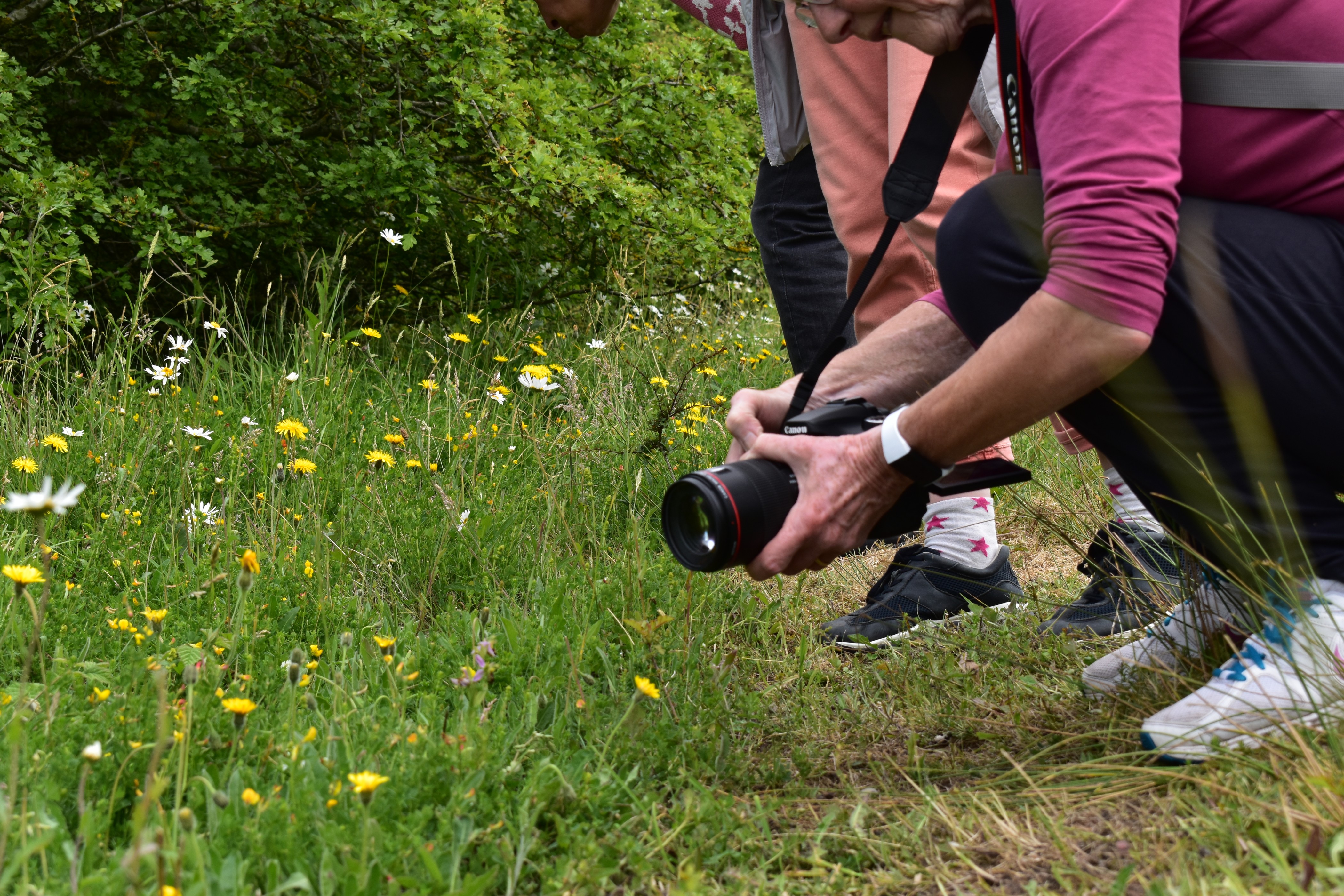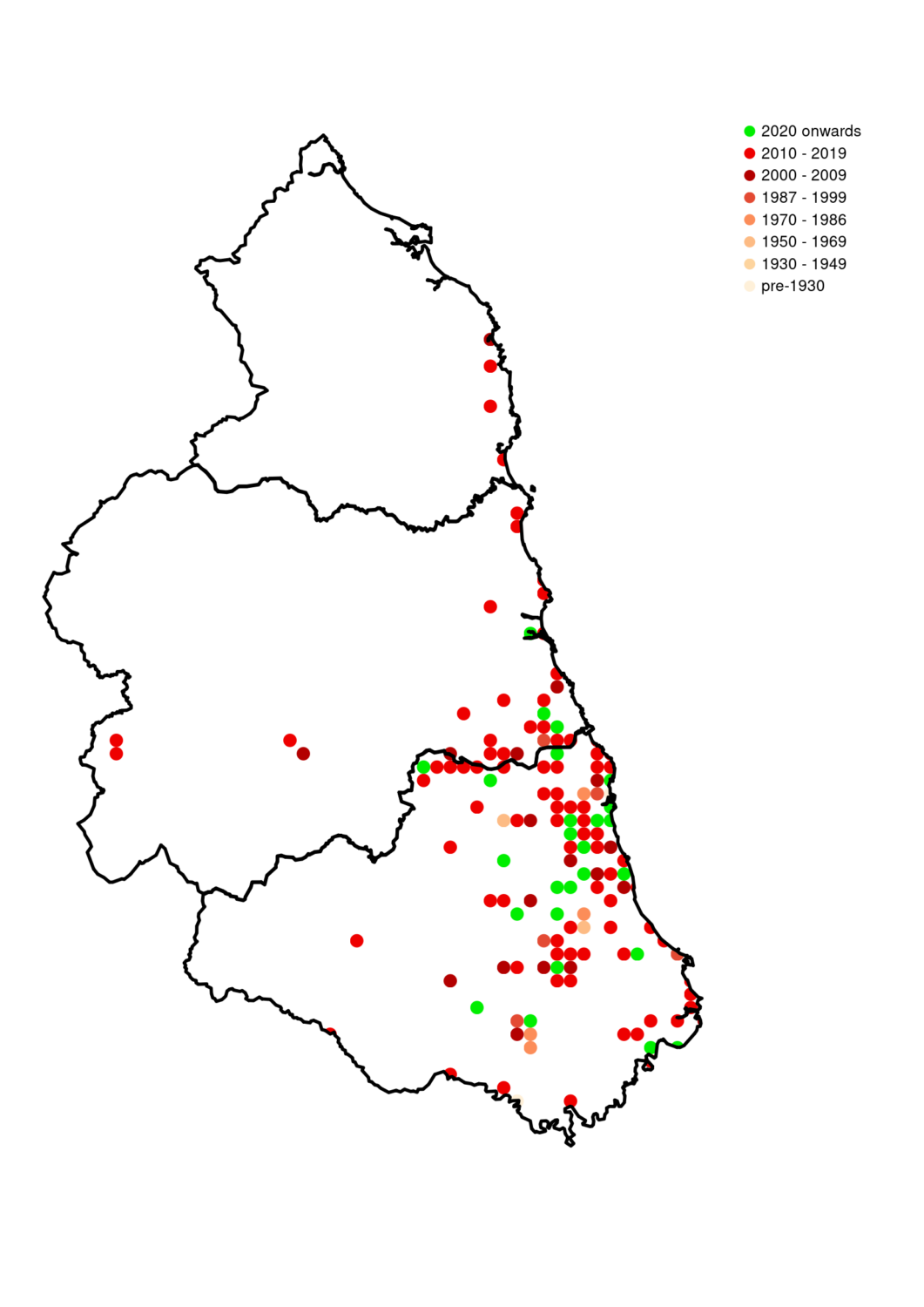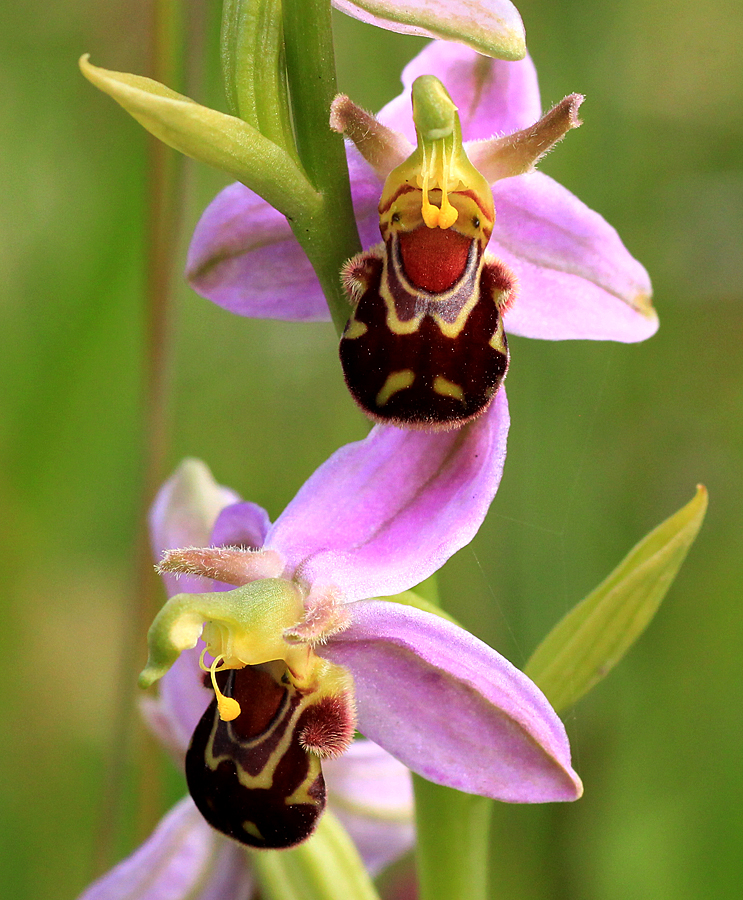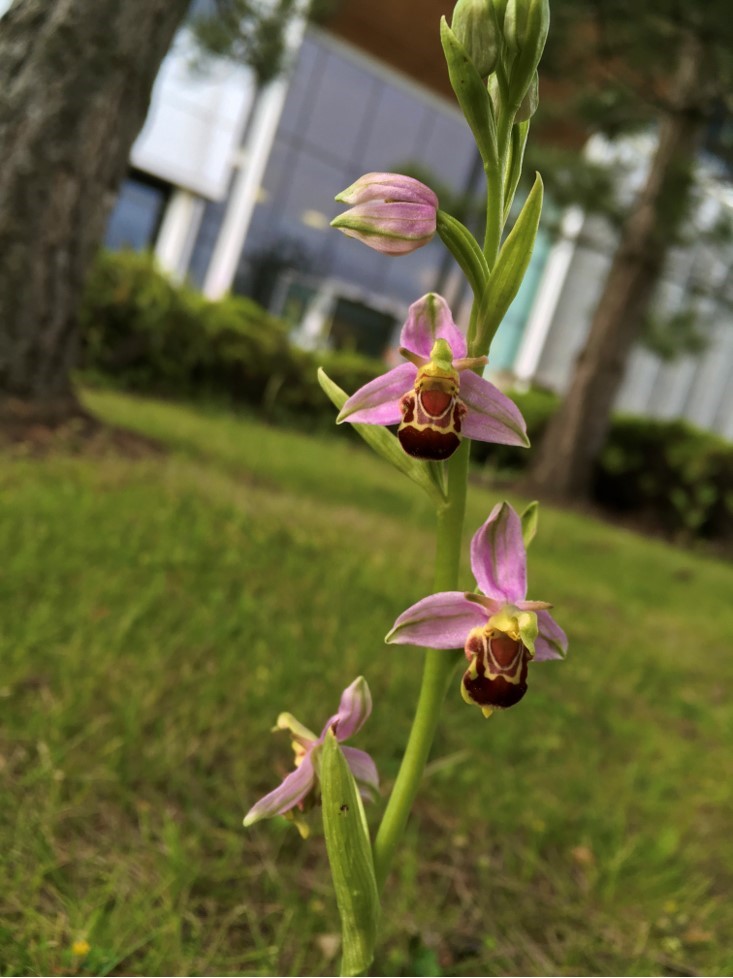Ophrys apifera
Fast facts
- Common name(s)
- Bee Orchid
- Scientific name
- Ophrys apifera
- When to see it
- June – July
- Habitat
- Grassland, including urban and industrial sites
Description
Distinctive and beautiful, the Bee Orchid is an unmistakable wildflower. Its name derives from its main pollinator, a species of bee, thought to have driven the evolution of its striking flowers.
Now firmly established and spreading in the North East, look out for this species on dry and limestone grassland, often on urban or former industrial sites.
Identification
A small orchid, the Bee orchid grows first a rosette of succulent, elongated leaves that can be spotted from autumn through to the following spring. When it comes time to flower, two leaves grow upwards forming a sheath from which a flower spike bearing multiple blooms emerges.
The flowers of Bee Orchids consist of three large pink sepals, resembling wings, at their centre are petals coloured a mix of brown and yellow resembling a bee.

Spotted this orchid?
Share your sighting of the Bee Orchid and other Discovering Orchids spotlight species to contribute to the conservation and study of these striking plants across our region.
Similar species
In the North East, there are no species that can be confused with this bright and brilliant orchid.
Did you know?
Bee Orchids in Britain are self-pollinated. The bee species associated with their striking evoultion is not found within the UK and as such, their striking mimicry is not really required.
Habitat and ecology
Bee Orchids can be found in a surprising variety of habitats including grassland on base-rich soils. Look out for them on limestone grasslands, along with woodland rides and on former industrial sites.
Bee Orchids require ground disturbance to germinate and are often encountered elsewhere in quarries, spoil heaps, roadsides, embankments and even wasteground in urban areas. Surprisingly for an orchid, they can sometimes be encountered on lawns too!
Regional Distribution
Locally common in County Durham, the Bee Orchid is spreading into South and North Northumberland.

Regional distribution of Bee Orchid © Botanical Society of Britain and Ireland

